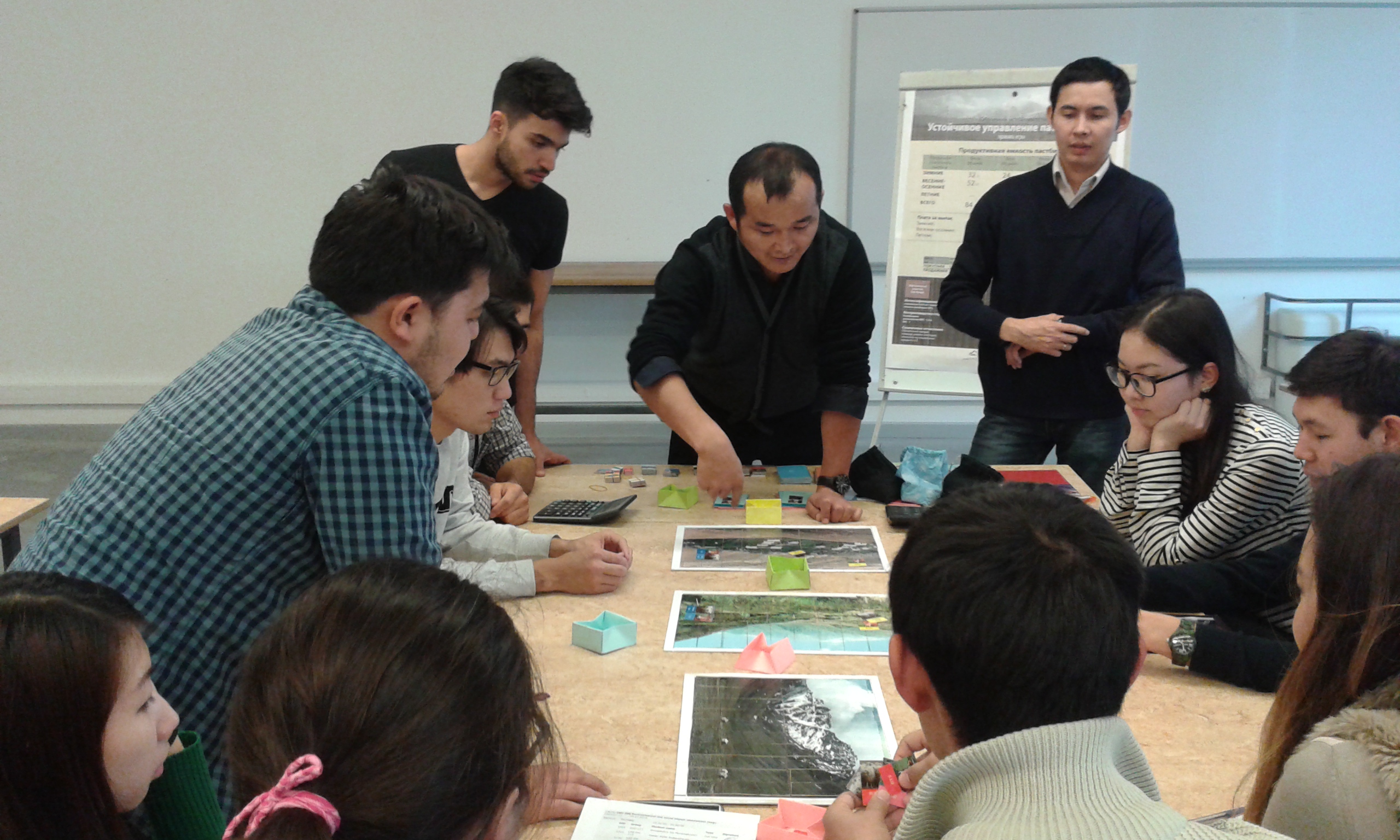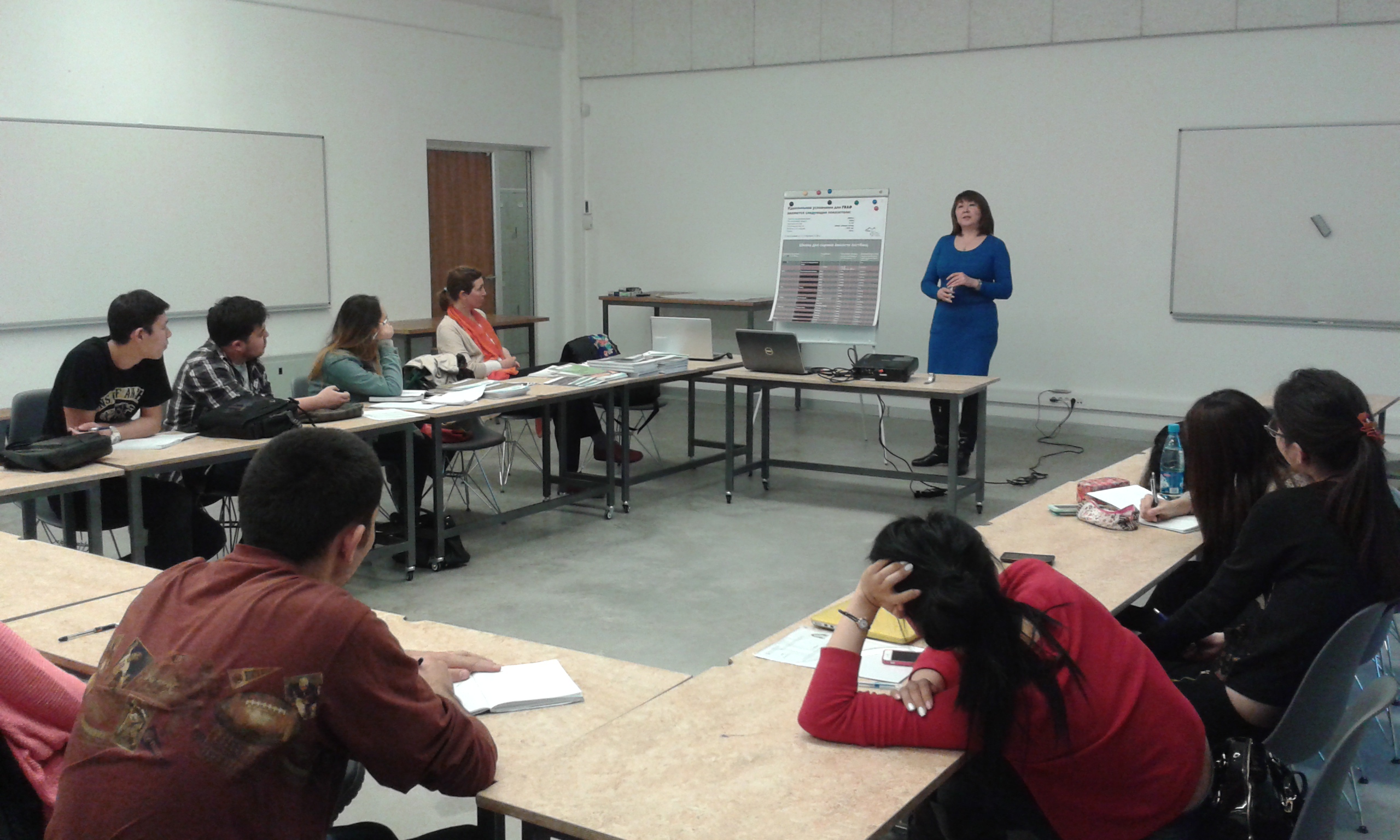November 19 - 24, 2015 two Practice Pasture Management Training Courses on Sustainable Pasture Management were held by Dr. Zheenbek Kulenbekov during his Environmental and Social Impact Assessment courses at AUCA.

The training courses were administered by the head of the Central Asian Mountain Partnerships (CAMP) Alatoo NGO, Azamat Isakov, and his colleagues Sonja Dimter, CIM Expert, and Salamat Djumabaeva, Project Coordinator. The courses are useful for livestock farmers.
Beksultan Mametibraimov and Daler Kaziev told us about their experience with the training courses.
Beksultan Mametibraimov, senior of Business Administration Department
“Life is a game. This is especially true when it comes to business. In business, you have a beginning, middle, and end. We played the “game” of Sustainable Pasture Management. Specifically, we operated within the framework of L4S Learning for Sustainability vis-à-vis agricultural household and pasture development. The game itself is similar to "The Sims" except with real world problems from arguably the most vital part of our society: agriculture. Through our program we experienced the importance of efficient governance. You get an idea of what it is like to be a “simple” farmer. If you are smart and lucky, you might even finish successfully. What you really learn is that being a farmer is not as simple as you thought. The program confronts you with many of the complex problems that every livestock farmer faces: pasture usage, predicting environmental issues, and predicting internal challenges like your cattle’s well-being. Anyone who wants to understand how small agriculture works MUST play this kind of game. The second course was also interesting because we learned to calculate the grazing capacity of our pastures.”

Daler Kaziev, junior of EMSD Program
“The main purpose of game was to understand a complexity of pasture capacity, herd development and the consequences of rational use of resources such as pastures. We divided into three teams with certain amounts of livestock. Interestingly, as we played, though we tried to maximize our livestock, it eventually lead to land degradation. No one wanted to invest in preparing winter fodder or in improving infrastructure. Certainly, we faced the consequences. We had to start thinking differently and acting differently. Later, we learned where to invest and graze our livestock and how to calculate the capacity of our pasture per livestock unit.”
--
Pasture Management System
In Kyrgyzstan, initially a pasture leasing system was introduced; however, conflicts over pastures between collective herding groups (unable to take out contracts) and leaseholders combined with the high transaction costs associated with the leasing system, and led to its abolishment in 2009. The law “On Pastures” introduced principles of common property resource management. Seasonal pastures are now allocated to village governments and managed by Pasture Users Associations (PUA) through the annual sale of pasture tickets calculated per head of livestock. A number of elements contributed to the successful introduction of the new law:
Consultations for drafting this Pasture Law were conducted over several months at the local, regional and national level. This ensured buy-in from the population and support from policy makers. The new legislation was well received by the population and policy makers because it was built on local traditions and the needs of most people. Pasture management decentralization aimed from the outset at the fair allocation of user rights to all villagers, not only livestock holders. The state’s ownership of pastures was incorporated into the new constitution to ensure the protection of communal pasture tenures from private interests. Other legislation has been harmonized with the Pasture Law to ensure implementation on the ground. There are many institutions engaged in pasture management. Some of these are formal and have a state mandate to manage pastures, while others have a more informal role. These institutions include Pasture Users’ Associations (PUAs), comprising user groups formed at the sub-district level; their executive bodies known as Pasture Committees (PCs); the Aiyl Okmotu (local government); the Aiyl Kenesh (village council); Village Health Committees, and the Council of Elders. The strengths of the institutional setups emerging from the recently implemented laws are as follows: